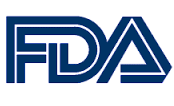Global Regulatory Guidance
Each of the regulatory agencies listed below is internationally recognized for the robustness of its standards, performance and overall contribution to the global regulatory environment. They therefore represent excellent sources of pharmaceutical regulatory guidance. ‘Clicking’ each logo will redirect your browser to the respective organization’s homepage where you can develop a deeper understanding of agency standards structure and operations.
Share this Page
In the specific case of guidance on biopharmaceuticals, you will find the EMA, WHO and the US FDA, particularly helpful.
The United States Food and Drug Administration (FDA) established in 1862 is an agency within the Department of Health and Human Services. Under the US Federal Food, Drug & Cosmetic Act it is mandated to regulate drug products in the United States.It consists of the Office of the Commissioner and four directorates each responsible for different core functions. These 4 directorates are; Medical Products and Tobacco, Foods, Operations and Global Regulatory Operations & Policy.
Established in 1995, The European Medicines Agency (EMA) is a decentralized agency of the European Union. Located in London, the agency is responsible for the scientific evaluation of medicines developed by pharmaceutical companies for use in the European Union. Depending on the nature of the medicinal product under consideration, marketing authorization in the EU can be done ‘state-by-state’ or via a centralized procedure that results in EU-wide marketing approval.

The International Conference on Harmonization of Technical Requirements for Registration of Pharmaceuticals for Human Use
Since the 1960’s, global authorities recognized the need for robust evaluation and regulation of pharmaceutical products prior to market entry. The 1970’s ushered in a period of strong impetus for harmonization of regulatory requirements and in the 1980’s, discussions on same were initiated in earnest between regulatory agencies from the US, Europe and Japan.
In Paris at the 1989 WHO International Conference of Drug Regulatory Authorities (ICDRA), plans were formulated for the creation of the International Conference on Harmonization (ICH). Subsequently, the ICH was established in April of 1990 in Brussels. The ICH continues to drive its mandate for harmonization of pharmaceutical regulation and characteristically, has segmented its recommendations into 3 key areas: Safety, Quality and Efficacy.
Up to the time of writing (October 2014) the Japanese pharmaceutical market remained the second largest in the world. In addition, as a founding member of the ICH the Japanese Ministry of Health, Labour and Welfare (MHLW) has significant influence over the global pharmaceutical regulatory environment. Together both these factors secure the MHLW’s place among the major influencers of global regulatory guidance.
Consistent with its role in the ICH all new drug applications to the MHLW are expected to be in the Common Technical Document (CTD) format.
The World Health Organization (WHO) is an agency of the United Nations and as at October 2014, included 194 member states. While not an actual regulatory agency responsible for marketing authorization or application processing in any particular market, the WHO provides worldwide guidance on health and health standards, including those related to pharmaceuticals.
According to the WHO website it is responsible for “Providing leadership on global health matters, shaping the health research agenda, setting norms and standards, articulating evidence-based policy options, providing technical support to countries and monitoring and assessing health trends.“





